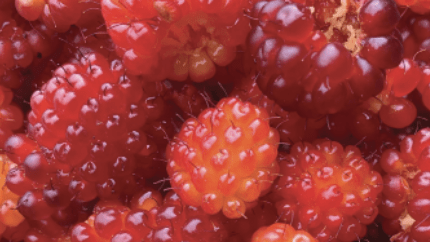Gear Review by Bjorn Dihle All serious berry pickers have their preferred techniques. Some are aggressive; some are Zen-like. I’ve tried different methods and even dabbled with a Jonas Swedish Berry Picker. Presently, I use a method I’ve learned from ravenous yet meditative bears that involves stripping bushes of their berries. Instead of using my jaws, though, I use my paws. My wife takes berry picking seriously but does not like to pretend to be a bear, at least when she’s in the woods. (Home life is a different story.) Numerous times she’s mentioned wishing she had a berry picking bucket that would allow her the use of both hands. So, last year I gifted her a Sagebrush Dry Hands-Free Berry Basket for her birthday. I was already a fan of Sagebrush Dry, as they’re a small-town southeast Alaska company and make great waterproof backpacks and other gear. My wife…
The Gift of Local Fare March brings new shoots of seaweed to Alaska’s southern coast, providing fresh nutrition at a lean time of year for wild foods. “Seaweeds are very nutritious,” says Vivian Faith Prescott, a lifelong Wrangell resident and author of My Father’s Smokehouse, a book on traditional Alaskan foods. “And they’re easy to gather.” Prescott says seaweeds have been a reliable staple for as long as people have lived on Alaska’s coast. She says spring is the best time to gather them. “Like some other plants, seaweeds can get stiff and lose their flavor later in summer,” she says. Prescott collects several seaweeds, including ribbon seaweed (Palmaria mollis, called k’áach’ in Lingit) and popweed (Fucus gardneri, called tayeidí in Lingit). But she says many species are edible and recommends Common Edible Seaweeds in the Gulf of Alaska by Dr. Dolly Garza as a resource. Prescott’s favorite vessel for…
A Taste of Wild Alaska by Vivian Wagner One July a few years ago, my husband and I sailed and hiked with friends around Kodiak Island, and everywhere we looked we saw them: bright red and orange salmonberries, hanging from bushes, just waiting to be plucked and eaten. It was the first time I’d ever had these berries, and I fell in love with them. We picked handfuls, eating as many as we could right where they grew, and carrying overflowing containers back to the boat. Salmonberries (Rubus spectabilis) are members of the rose family, and they’re related to raspberries, cloudberries, and other brambles. In Alaska they grow predominantly in damp coastal areas in the southeast, southcentral, and southwest regions. Prized as food by indigenous peoples, salmonberries can be eaten raw or used for pies, tarts, pancakes, jam, or syrup. They’re also high in antioxidants and vitamins A and C.…
Communication is Key I grew up in the Lower 48, and over the last decade, I’ve come to realize the differences between people who live in Alaska versus those who don’t. My clients, who I take on Alaska tours, also note these distinctions and point them out—usually with amusement, and other times with shock akin to having entered a foreign country with a different language and culture. Of course, these are generalizations—but indulge me for my years on the ground in the north and attempts at self-deprecating humor. One of the first things you need to know about Alaskans is that they prefer to communicate by phone or in person. Many businesses don’t publish their email address for correspondence, not even a general one or automated form. Because I have social anxiety and will always choose to write rather than call or meet in person, I have spent hours searching…
Seven long-time faves on the culinary scene Alaska has gained quite the reputation among foodies—and deservedly so. Using the best of what Alaska has to offer, the state’s chefs, bakers, and restaurateurs have added a distinctly northern twist to their food service. Fresh Alaskan seafood is always a featured ingredient; game may be on the menu, too, as available. Locally grown produce, such as berries and vegetables that do well in Alaska’s northern climate, are used whenever possible. And a tempting assortment of homemade treats for dessert is meant to warm the heart as well as fill the stomach. The results are, well, delicious. From rural roadhouses to urban steakhouses, Alaska’s culinary scene has something for every palate and budget. Among the many choices, certain local landmarks stand out. They have earned a loyal following over time for offering a unique and distinctly Alaskan dining experience. What’s more, they are…
Devil’s club often lives up to its ominous name, but if harvested early enough it can be a tasty morsel when included in dishes like pasta.
Bambino’s Baby Food is an Alaskan-owned business that manufactures baby food using local ingredients, including sockeye salmon.
Chef Andrew Maxwell can’t stop making – and eating – these simple sourdough crackers, which he regularly serves alongside a halibut spread.
Moose is normally thought of a lean meat, but Chef Andrew Maxwell suggests using the marbeled shank to make a rich osso buco.
Alaska deserves status among other American barbecue varieties, and to assist the process Andrew Maxwell created Mountain Goat Chili with Alaskan beets.










